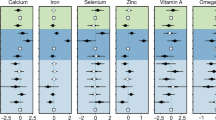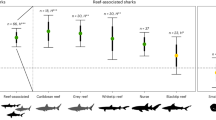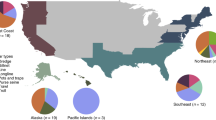Abstract
Any fish species that appears to be readily available in the marketplace will create an impression among the public that there is a plentiful supply of that fish in the sea, but this may belie the true state of the fisheries' stock. Here we use molecular genetic analysis to show that some three-quarters of the fish sold in the United States as ‘red snapper’ — the US Food and Drug Administration's legally designated common name for Lutjanus campechanus1 — belong to another species. Mislabelling to this extent not only defrauds consumers but could also adversely affect estimates of stock size if it influences the reporting of catch data that are used in fisheries management.
This is a preview of subscription content, access via your institution
Access options
Subscribe to this journal
Receive 51 print issues and online access
$199.00 per year
only $3.90 per issue
Buy this article
- Purchase on Springer Link
- Instant access to full article PDF
Prices may be subject to local taxes which are calculated during checkout

Similar content being viewed by others
References
Office of Seafood, Food and Drug Administration (http://www.cfsan.fda.gov/~frf/seaintro.html).
Moran, D. Biological report 82(11.83) TR EL-82-4 (National Wetlands Research Center, Louisiana, 1988).
Huang, T. -S., Marshall, M. R., Kao, K. -J., Otwell, W. S. & Wei, C. -I. J. Agric. Food Chem. 43, 2301–2307 (1995).
National Marine Fisheries Service, Fisheries Statistics and Economics Division, Silver Spring, Maryland (http://www.st.nmfs.gov/).
Sarver, S. K., Freshwater, D. W. & Walsh, P. J. Copeia 3, 715–719 (1996).
Johannes, R. E. Trends Ecol. Evol. 13, 243–246 (1998).
Watson, R. & Pauly, D. Nature 414, 689–695 (2001).
Reef Fish Assessment Panel Report (Gulf of Mexico Fishery Management Council, 1994).
Marine Fisheries Stock Assessment Improvement Plan (National Marine Fisheries Service, 2001).
Atlantic Billfish Research Plan (National Marine Fisheries Service, 2002).
Porch, C. E. & Cass-Calay, S. L. Status of the Vermilion Snapper Fishery in the Gulf of Mexico: Assessment 5.0 SFD-01/02-129 (Southeast Fisheries Science Center, Miami, Florida, 2001).
Review of Existing Public Opinion Data on the Oceans (The Ocean Project, 1999).
Swofford, D. L. PAUP*: Phylogenetic Analysis Using Parsimony (*and Other Methods), version 4 (Sinauer, Sunderland, Massachusetts, 2001).
Author information
Authors and Affiliations
Corresponding author
Ethics declarations
Competing interests
The authors declare no competing financial interests.
Rights and permissions
About this article
Cite this article
Marko, P., Lee, S., Rice, A. et al. Mislabelling of a depleted reef fish. Nature 430, 309–310 (2004). https://doi.org/10.1038/430309b
Published:
Issue Date:
DOI: https://doi.org/10.1038/430309b
This article is cited by
-
Exploring hidden diversity in Southeast Asia’s Dermogenys spp. (Beloniformes: Zenarchopteridae) through DNA barcoding
Scientific Reports (2018)
-
The seafood supply chain from a fraudulent perspective
Food Security (2018)
-
Global trade statistics lack granularity to inform traceability and management of diverse and high-value fishes
Scientific Reports (2017)
-
Spatio-temporal variability of trace elements fingerprints in cockle (Cerastoderma edule) shells and its relevance for tracing geographic origin
Scientific Reports (2017)
-
A DNA Mini-Barcoding System for Authentication of Processed Fish Products
Scientific Reports (2015)
Comments
By submitting a comment you agree to abide by our Terms and Community Guidelines. If you find something abusive or that does not comply with our terms or guidelines please flag it as inappropriate.



